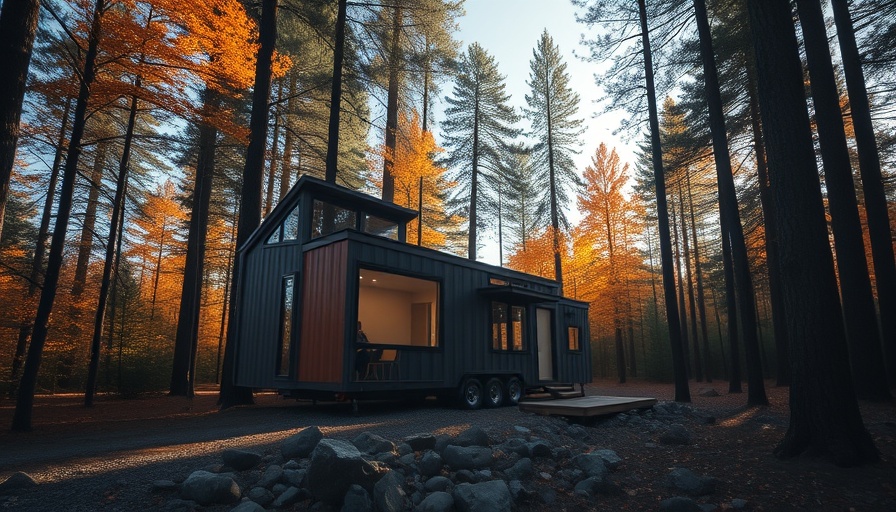
Unpacking the Movement Behind Movable Tiny Homes
As the demand for alternative housing solutions continues to rise, movable tiny homes, often referred to as tiny houses on wheels (THOW), have garnered significant attention. In 2016, the International Residential Code (IRC) included Appendix Q, a monumental step acknowledging tiny homes based on foundations. However, this regulatory framework left movable tiny houses in a legal gray area, unable to secure the recognition they deserve. This oversight forms the crux of the Tiny House Appendix: Act 2, a leading campaign aimed at extending IRC protections to these mobile dwellings.
A Campaign with Momentum: Gathering Support
The Tiny House Appendix: Act 2 has gained substantial traction, amassing over 7,000 signatures from supporters eager to see movable tiny homes legalized. Advocates aim to gather a total of 15,000 signatures by the next council hearing. This grassroots effort highlights the community's fierce dedication to advocating for affordable housing options that fit modern lifestyles. By pushing the ICC Board to review and approve changes, supporters are actively working to ensure that movable tiny homes are included in a comprehensive legal framework that acknowledges their validity as a viable housing solution.
Why Should We Care About Movable Tiny Homes?
The legalization of movable tiny homes is more than just a matter of inclusion; it represents a broader movement towards sustainable living and affordable housing. The initiative not only aims to provide legal recognition but seeks to pave the way for integrating tiny homes into urban settings, where the need for low-cost housing is most acute. As cities grapple with escalating housing costs and declining space availability, movable tiny homes offer an innovative solution that addresses these pressing issues while promoting ecological mindfulness.
Exploring the Technological Side of Tiny Living
Modern technology has played an essential role in advancing the tiny home movement. Innovations in construction methods, such as modular building techniques and off-site construction standards, have made it possible to build tiny homes that are both compliant with residential codes and equipped with the features needed for full-time living. Recent advisories published by the International Code Council (ICC) outline how tiny houses built using off-site methods can meet these residential standards, facilitating a growing acceptance of these homes as permanent residences.
Finding Common Ground: Addressing Misconceptions
Despite advancements, misconceptions abound regarding the legality of tiny houses. Many believe that because they are on wheels, they fall outside the applicability of the IRC. This is false. The IRC does not restrict the presence of wheels, lending validity to the argument that movable tiny homes can meet residential standards. As the movement gains momentum, addressing and dispelling these myths is vital, allowing more people to participate in discussions about tiny homes and their potential impact on housing solutions.
Next Steps: How You Can Get Involved
Community support is crucial for the success of the Tiny House Appendix: Act 2. Interested individuals can assist by signing the petition to support the initiative and by engaging in conversations about the importance of codifying movable tiny homes. Every voice counts in highlighting the necessity for comprehensive regulations that include all forms of tiny living. Additionally, exclusive limited edition stickers are available to celebrate this movement while raising funds and awareness for ongoing campaigns.
As the push for legalizing movable tiny homes continues, now is the time for all individuals interested in affordable housing to take action. Your support can help make history and shift the perception surrounding tiny homes into mainstream acceptance.
 Add Row
Add Row  Add
Add 




Write A Comment